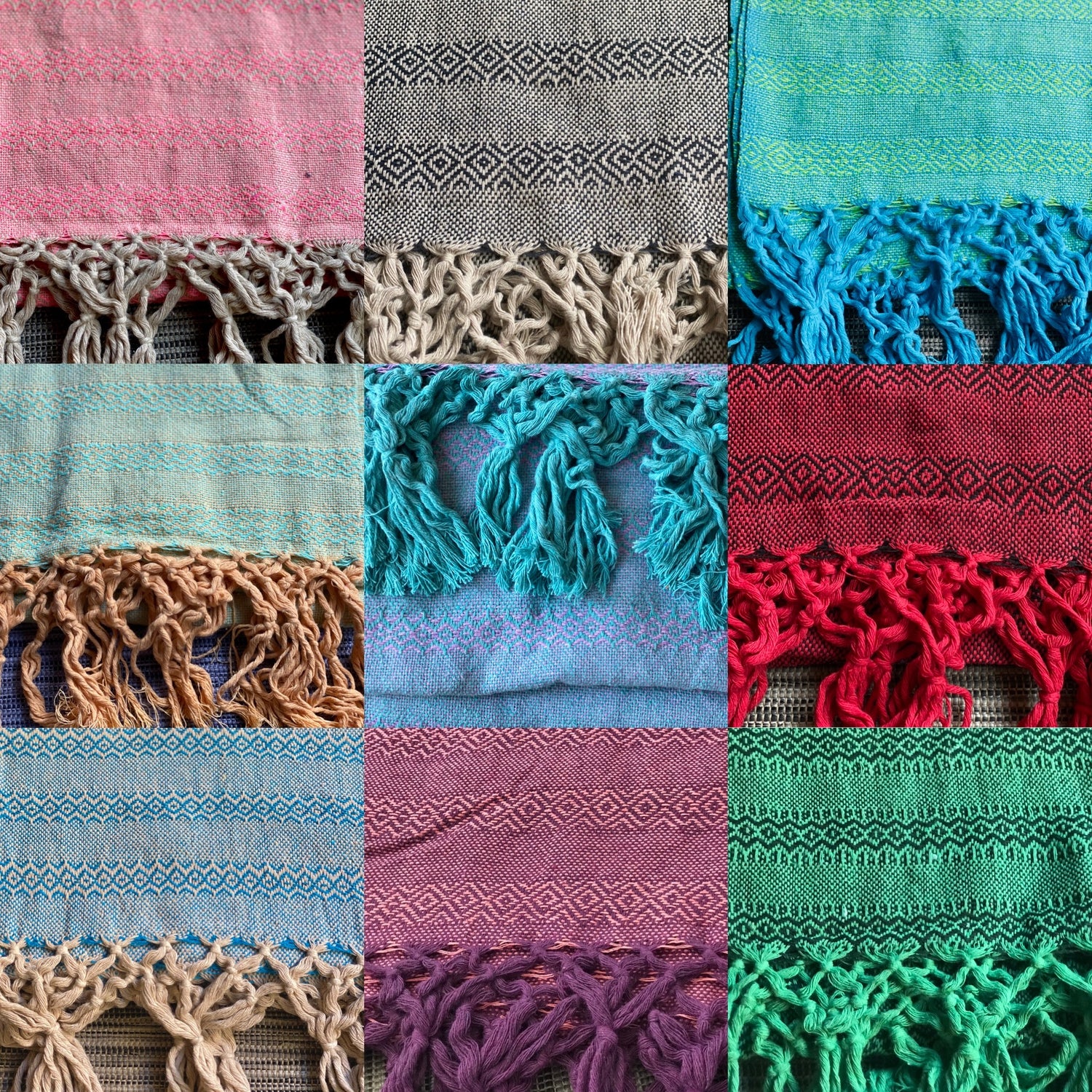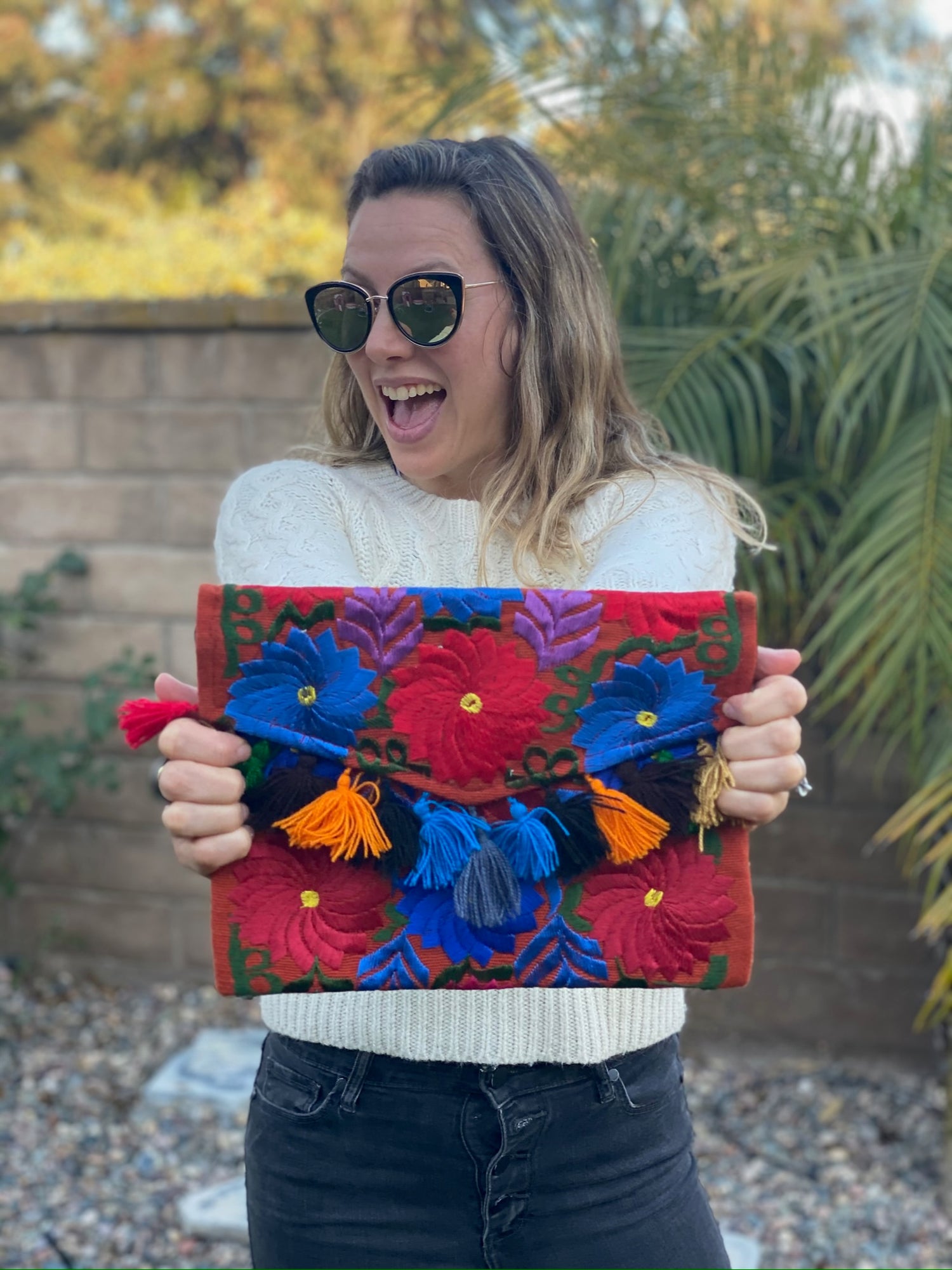The rebozo is more than just a traditional shawl; it plays a vital role in Mexican medicine and healing practices.
This versatile cloth is used in various therapeutic applications, showcasing its significance in promoting health and well-being.
For generations, the rebozo has been a part of cultural rituals and healing techniques, making it an essential tool in the lives of many.

Understanding the historical and cultural context of the rebozo can enhance your appreciation of its use in traditional medicine.
You will discover how this simple piece of fabric carries deep ancestral wisdom and connects individuals to their heritage while addressing physical and spiritual needs.
As you explore how the rebozo is woven into healing practices, you will see how it supports women during different life stages.
This connection underscores the rebozo's importance in maintaining health and balance in the body and mind.
Key Takeaways
- The rebozo is essential in traditional Mexican healing practices.
- It has deep cultural and historical significance.
- The rebozo supports physical and spiritual health for women and families.
Historical and Cultural Context of the Rebozo in Traditional Mexican Healing

The rebozo is a unique garment that plays a vital role in traditional Mexican healing practices. Its origins and significance tie deeply into various cultures, especially among Indigenous communities.
Exploring its use within curanderismo reveals its importance in both physical healing and spiritual practices.
Rebozo's Origins and Significance
The rebozo has roots that trace back to pre-Hispanic Mexico. Indigenous groups like the Aztec and Maya originally used it for various purposes, including carrying children and goods.
Over time, the rebozo evolved into a symbol of Mexican identity.
It is often made of colorful fabrics that reflect local traditions. The practical use of the rebozo has transitioned into its role in healing practices.
Role of the Rebozo in Curanderismo
Within curanderismo, the rebozo is essential for rituals and healing. Curanderos, or traditional healers, incorporate it as a tool in various therapies.
They use the rebozo to perform "combingos," a technique for energetic cleansing. This process often involves wrapping the patient in the rebozo to facilitate the release of negative energies.
Additionally, the rebozo serves as a protective barrier, helping to create a sacred space during healing.
Understanding Medical Pluralism in Mexico
In Mexico, medical pluralism reflects the coexistence of traditional and modern healing methods. The rebozo stands at the intersection of these approaches.
You might find it used in conjunction with Western medicine in many communities. This blend allows individuals to choose practices that resonate with their beliefs and experiences.
For instance, patients may visit a curandero and then seek conventional medical care.
This flexibility is noted by the World Health Organization, which emphasizes the importance of integrating cultural practices into health care systems.
Spiritual and Community Aspects of Healing
The rebozo embodies not just physical healing but also spiritual connections within the community. It plays a significant role in rituals that celebrate life events, like births and weddings.
The act of using the rebozo often involves community participation, strengthening social bonds.
In healing ceremonies, the rebozo creates an intimate atmosphere, enhancing the spiritual experience for those involved.
This connection focuses on collective well-being, which is crucial in many Indigenous cultures.
Using the rebozo allows you to honor tradition while fostering a sense of belonging.
Therapeutic Applications and Healing Practices with the Rebozo

The Rebozo is a versatile tool in Mexican traditional medicine, offering a variety of therapeutic benefits. Its use spans emotional, physical, and spiritual realms. Below are key areas where the Rebozo is applied in healing practices.
Rebozo Techniques and Health Benefits
Rebozo techniques involve wrapping, lifting, and supportive movements that can enhance well-being. This cloth is often used for gentle rocking or "sifting" during labor, promoting comfort and relaxation.
Health Benefits include:
- Physical: Alleviates pain during childbirth and supports postpartum recovery.
- Emotional: Provides a sense of security and nurtures bonding between mother and child.
- Spiritual: Used in rituals, the Rebozo enhances spiritual wellness and connection to traditions.
Through these techniques, you may find improved physical comfort and emotional stability during critical life stages.
Remedies Associated with Rebozo Therapy
Various remedies utilize the Rebozo in conjunction with traditional practices. For example, it often plays a role in herbal therapies. Healers, or curanderos, may incorporate herbs into their treatments to enhance effects.
Common methods include:
- Binding the abdomen to improve digestive health.
- Using the Rebozo to facilitate spiritual cleansing rituals.
- In a supportive role during temazcal (steaming ceremonies) which promote detoxification.
These remedies aim to restore balance in both physical and spiritual health, based on traditional knowledge.
Safety Considerations and Efficacy of Treatments
When using the Rebozo, safety is crucial. Make sure to consult with trained traditional healers or curanderos for proper techniques.
Efficacy of Rebozo methods may vary. Considerations include:
- Individual health conditions should be assessed.
- Understand that not all benefits are backed by modern scientific studies.
- Emotional and psychological outcomes are often significant, making subjective experiences important in healing.
Being aware of these factors ensures you approach treatments responsibly.
Integrating Traditional Practices with Modern Medicine
Combining the Rebozo's use with modern medical practices creates a holistic approach to health. You can benefit from both traditional knowledge and contemporary medical understanding.
Integration methods include:
- Discussing your interest in traditional practices with healthcare providers.
- Using the Rebozo for pain management alongside prescribed medications.
- Acknowledging the importance of diet, prayer, and wellness in both practices.
This synthesis promotes a comprehensive pathway to wellness, respecting both traditions and modern medicine.
Frequently Asked Questions

The rebozo is an important tool in Mexican traditional healing, especially during pregnancy and childbirth. Understanding its uses, techniques, and cultural significance can help you appreciate its role in supporting women.
How is the rebozo utilized during pregnancy and labor?
During pregnancy, the rebozo provides support for the growing belly. It can be used to help ease discomfort and is often employed during labor to assist with positioning and movement. The gentle pressure of the rebozo can help in managing pain and facilitating relaxation.
What techniques are involved in the rebozo treatment?
Rebozo techniques include sifting, which involves gentle rocking motions to help ease labor pains. Another common method is the Manteada, where the woman is wrapped and lifted, providing support and comfort. These techniques promote mobility and can aid in a smoother birthing process.
What is the historical significance of rebozos in Mexican culture?
Rebozos have deep roots in Mexican culture, used for generations by women for support during various life stages. They symbolize comfort, care, and tradition. Historically, rebozos were made by hand, often representing the artistry of local artisans and the community’s shared heritage.
Where can one acquire a rebozo for childbirth purposes?
You can acquire a rebozo from various sources, including local artisan shops, markets, or online stores specializing in Mexican cultural items. It’s essential to choose one that is made of high-quality fabric for durability and comfort during use in childbirth.
How does the rebozo Manteada practice contribute to traditional healing?
The Manteada practice involves wrapping a woman in the rebozo and gently lifting her. This technique is believed to support the body during labor, helping to relieve tension and encourage relaxation. It is an essential aspect of traditional healing that focuses on respecting the woman's experience during childbirth.
What cultural importance does the rebozo hold in Mexican traditions?
In Mexican traditions, the rebozo is more than just a piece of fabric; it represents nurturing and femininity.
It is often used in ceremonies and celebrations, reflecting the cultural value placed on community support and family ties.
The rebozo serves as a link between generations, preserving important customs and practices.




